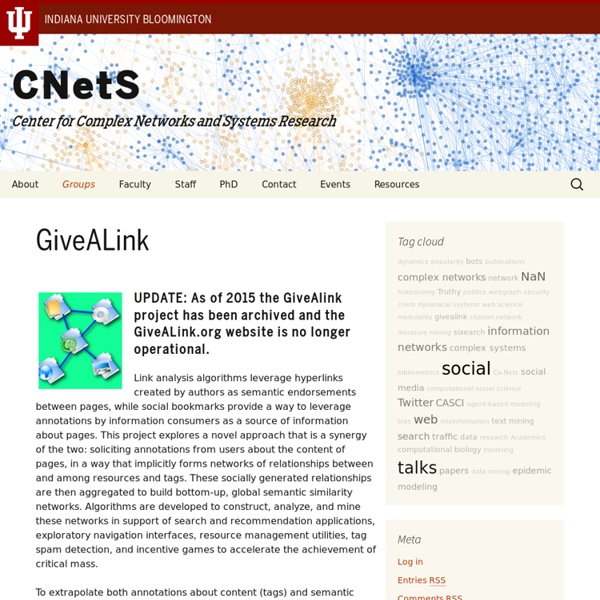Hypernetworks in the Science of Complex Systems
From networks to hypernetworks in complex systems science
Jeffrey Johnson (Open University, UK) Abstract: Complex systems have multilevel dynamics emerging from interactions between their parts. Affiliation Jeffrey Johnson Centre for Complexity and Design The Open University, Milton Keynes, MK7 6AA, UK jeff.johnson@open.ac.uk Biography Jeffrey Johnson is Professor of Complexity and Design at the Open University in the UK. Presentation Slides Video References Johnson, J. Johnson, Jeffrey (2012). ‘Challenges in complex systems science’, San Miguel, M.; Johnson, J. Johnson, Jeffrey (2012).
X 4, 021014 (2014) - Driving Interconnected Networks to Supercriticality
In the age of Facebook, Twitter, and email, the phenomena of a story, an idea, or a certain behavior going “viral” are commonplace. But, viewed scientifically, such phenomena are far from being trivial. First of all, the underlying mechanisms have certain degrees of unpredictability, or randomness. Moreover, the structure of human connectivity that enables such viral spreading (or “diffusion”) is actually composed of many layers of networks arbitrarily interconnected. Very little is known about the basic scientific properties of viral spreading processes taking place in interconnected multilayer networks. We find that features of diffusion processes in interconnected networks strongly depend on the relation of proportionality between the numbers of connections that nodes have in different layers. Our findings have direct applicability in the design and control of real interconnected systems. Subject Areas
Networks of Networks: The Last Frontier of Complexity
Contributions from leaders in the field of Network Science Encapsulates developments in this emerging field in a clear manner Interdisciplinary fields are represented The present work is meant as a reference to provide an organic and comprehensive view of the most relevant results in the exciting new field of Networks of Networks (NetoNets). Seminal papers have recently been published posing the basis to study what happens when different networks interact, thus providing evidence for the emergence of new, unexpected behaviors and vulnerabilities. From those seminal works, the awareness on the importance understanding Networks of Networks (NetoNets) has spread to the entire community of Complexity Science. Content Level » Research Related subjects » Complexity - Game Theory / Mathematical Methods Table of contents / Preface / Sample pages Popular Content within this publication Show all authors Hide authors
Complex Networks
Complex Networks Complex Networks are everywhere. Many phenomena in nature can be modeled as a network, as brain structures, protein-protein interaction networks, social interactions and the Internet and WWW. All such systems can be represented in terms of nodes and edges indicating connections between nodes. In Internet, for example, the nodes represent routers and the edges the physical connections between them. In the same way, in transport networks, the nodes can represent the cities and the edges the highways that connect them. An important characteristic of these networks is that they are not random, but have a more structured architecture. In this site we provide some resources for the study of complex networks. L. da F. University of São Paulo - USP Institute of Physics at São Calos - IFSC Brazil
| Center for Complex Networks and Systems Research



